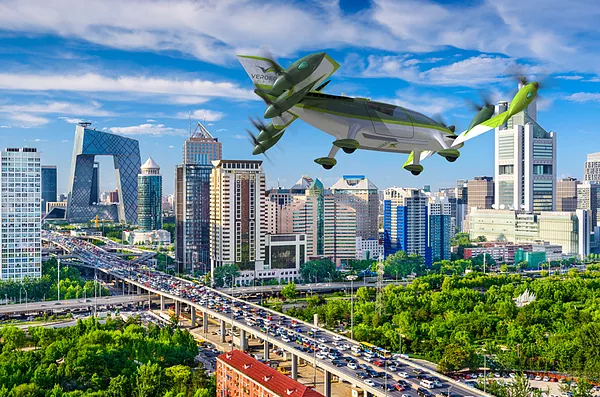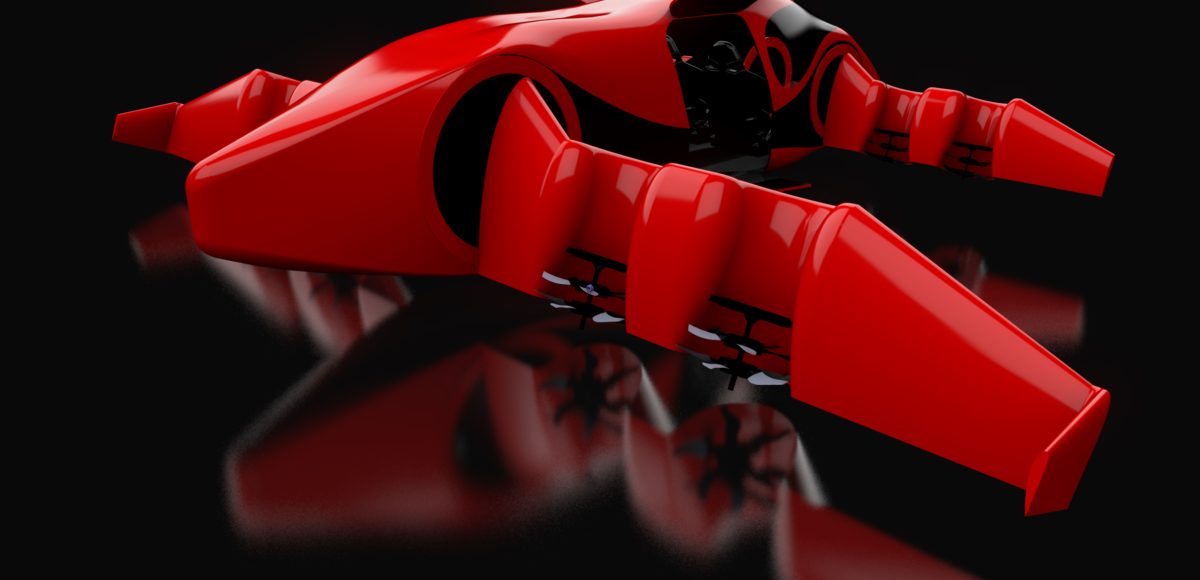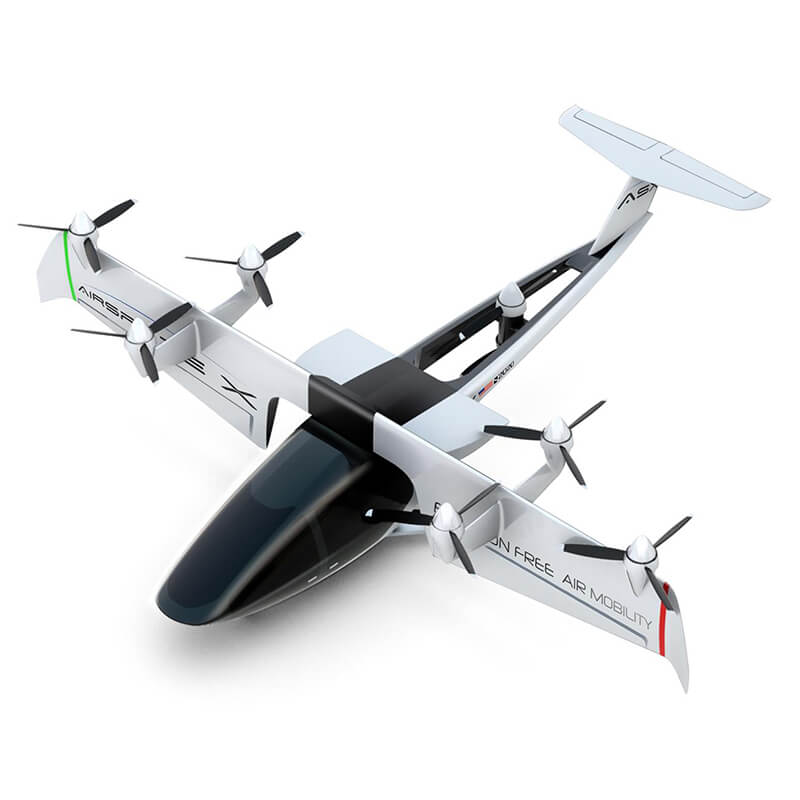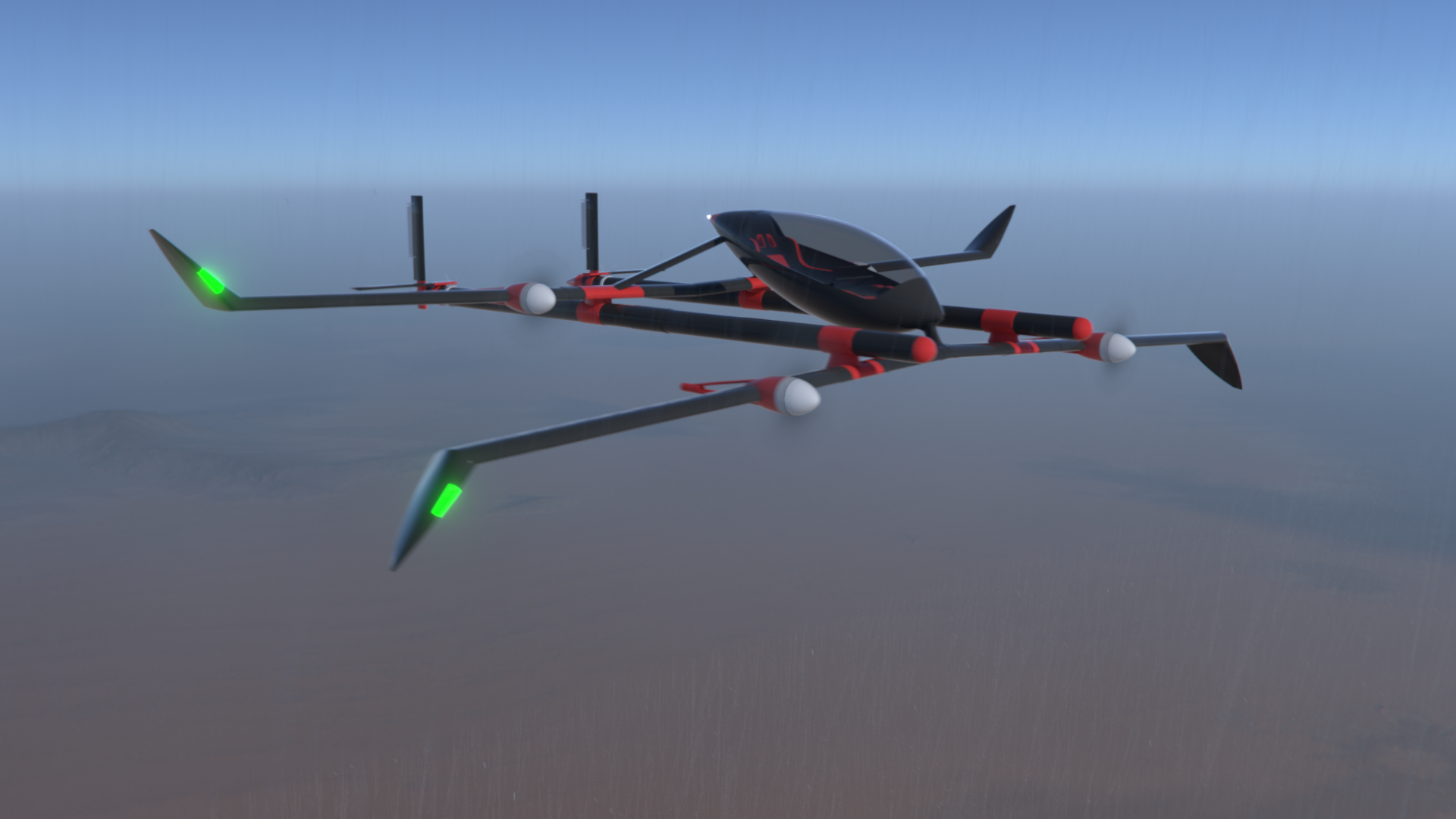Two months of eVTOL developments in one post!
Launches/reveals
- Erik Lindbergh (yes, that Lindbergh) launches VerdeGo
- Bell Helicopter shows cabin mockup
- Hopflyt goes public with eVTOL craft based on Custer Channelwing concept
- Detroit Aircraft shows mockup at Detroit auto show
- Vimana, the worst eVTOL concept yet (now with BLOCKCHAIN and 100% NATURAL AUTO-STABILIZATION!)
- Vahana (apparently) misses targeted 2017 first flight
- Workhorse Surefly accomplishes tethered flight at Consumer Electronics Show
- Boeing reveals multirotor, heavy-lift cargo drone
- Zee Aero shows some old flight test footage on CNN
Industry developments
- Uber makes strange request of City of LA government
- Uber hires away Tesla's top battery expert
- AHS holds sold-out eVTOL technical meeting in San Francisco
There's been a flurry of activity since Thanksgiving; I will address only vertical lift applications in this update and discuss fixed wing developments in a separate post.
Reveals / New info
VerdeGo goes public
Erik Lindbergh, grandson of aviation pioneer Charles Lindbergh, has stepped into the eVTOL fray with partners Pat Anderson (of Embry Riddle) and Eric Bartsch (electric transportation entrepreneur) (AvWeek). Their proposed PAT200 personal air taxi looks very similar to Airbus Vahana. The design is a series hybrid rather than all-electric, which will help with range and possibly weight, but not with cost or noise. Bartsch describes the drivetrain as "electron-agnostic", meaning it is forward-compatible with better future batteries; this is a similar argument to what Zunum Aero is saying in the fixed wing domain. First scale model flights are planned for 2018.

Credit: VerdeGo
I don't see any technical showstoppers at first glance (compared with other eVTOL proposals), but without an announced major investor, I wonder how long their funding runway is. Pat Anderson was a good selection for the leadership team; the ecoEagle electric aircraft project at Embry Riddle had a challenging set of requirements and was one of only a handful of aircraft to fly in the NASA Green Flight Challenge. ecoEagle used a parallel hybrid drivetrain with 105kW maximum total power.
It can't be harder than flying across the Atlantic solo for the first time. Can it?
Bell Helicopter cabin teaser
Textron subsidiary Bell Helicopter announced at the 2017 Uber Elevate summit that they would be developing an urban air taxi. Until now, we haven't had a glimpse of what they've been up to in Fort Worth. Well, now we have a little teaser. Bell built a cabin mockup (with no hints at the propulsion architecture) and displayed it at the Consumer Electronics Show (CES) in Vegas this month. Sure looks slick!

Credit: Bell Helicopter
The Custer channelwing lives again
Way back in 1929, Willard Custer patented a semi-circular ducted propeller installation with claimed short takeoff or landing (STOL) capabilities. A series of prototypes followed from the 1940s to 1960s. In the 1950s, Taylorcraft was the first manufacturer to announce plans for a production model (see awesome archived Flight magazine article here).
The channelwing idea is to use a pusher propeller on the trailing edge of the wing to generate low pressures on the top surface of the wing and favorable pressure gradients to keep flow attached at high lift coefficient. By reshaping the wing into a semicircular duct, the propeller sucks in air only from the top surface of the wing rather than from the top and bottom (as a typical pusher installation would). The Custer prototypes demonstrated good low speed performance but suffered greatly from high drag and weight; economically, they could never compete with conventional propeller aircraft, even for STOL missions.
Well, the HopFlyt company has been working on a tilt/channelwing concept since the Uber Elevate summit and they recently announced that they've been seeing encouraging results from scale model flights. The leadership team is mostly pilots and test engineers.

Credit: HopFlyt
It's unclear to me why the channelwing concept makes sense for a tilt-wing vehicle, which can already take off vertically. I suppose it is possible that it is slightly more efficient to generate blown lift over a wing than to generate direct lift using the same propellers, but that seems like a free lunch from an aerodynamics perspective. For all other phases of flight, the airplane will suffer weight and drag penalties just like the Custer prototypes did. One interesting possibility is that the channelwing isn't so much for aerodynamic performance as it is for noise. Structural shielding is generally the best option for reducing noise signature, and the channelwing shrouds the contra-rotating propellers from an observer on the ground from nearly every direction.
AirspaceX at the North American International Auto Show
Yet another Uber Elevate competitor is AirspaceX (not to be confused with SpaceX) based in Detroit, MI. As a Michigan native, I'm rooting for these guys. Rotor and Wing reports that AirspaceX showed a mockup of their "MOBi-ONE" concept at Detroit's major auto show. AirspaceX announced at the Uber Elevate summit that they are receiving funding from an auto OEM, but they haven't yet named which one(s) are backing them.
The first iteration, MOBi-ONE, appears to be an all-electric design with Uber Elevate mission capabilities (short range, modest speed). It is a single tilt-wing configuration most similar to the Joby S2, with vertically-oriented fans along the tail boom. It looks just as feasible as the other tilt-wings. AirspaceX's "planned" first flight is 2020.

Credit: AirspaceX
The next iteration, "MOBi 2025" is even less conventional, with a tilt-wing frame and detachable passenger/cargo/utility pods. This is more similar to the modular approach taken by CityAirbus and (presumably) Bell Helicopter.
Cynical Vimana project: will it take investor money and run?
Some eVTOL projects are ill-conceived or unviable ideas promoted by true believers. I can't fault them for trying. But I have a new least favorite eVTOL company: Vimana Global. Revealed at the Arab Future Cities Summit, the concept appears to be a loosely-defined hybrid-electric tiltwing. Based on the renderings I've seen, it's completely unrealistic as a vehicle (way too slender structurally and for systems integration, ultra-high disk loading).

Credit: Vimana
What really has me steamed is how CEO Evgeni Borisov appears to be using the current blockchain mania to drive investment in his project. The Vimana "distributed blockhain-based control system" is a truly stupid idea, which appears to be:
- A kind of SEO to drive clicks to his site
- A buzzword to get backing from technologically unsophisticated major investors
- A transparent ploy to have a bogus "initial coin offering" to take money from retail investors
The buzzword count is truly remarkable: “Completely autonomous, #blockchain-based and regulated #airspace #ecosystem with 100% natural auto-stabilization during the flight". What a joke. Do NOT invest in Vimana's ICO
Flight test progress
Workhorse Surefly flies manned, tethered at CES
Workhorse, a company mainly known for electric trucks, has flown a manned, series-hybrid electric demonstrator. This is an impressive feat, as the company only announced its entry into the market in mid-2017 and has not previously produced aerospace products. The prototype took off very briefly on the tarmac of the Las Vegas airport during the CES.
There were several media mentions of the planned flight, including in Aviation Week. However, media coverage following the flight has been nonexistent. The company didn't even update its site with video or a press release. Third-party video of the short flight raises some questions (sorry, no embed). The craft appears to have issues with control, evidenced by apparently asymmetric thrust. The noise quality is similar to a general aviation propeller plane (kind of annoying, certainly not quiet). I suspect this noise is due to high disk loading and contra-rotating propellers, not the engine. Hopefully the company resolves issues soon and we'll be treated to more test flight video.
Vahana apparently misses self-imposed first flight goal
Back in November, Airbus released a blog post detailing the Vahana team's move to their new test site in Pendleton, OR. Several media outlets reported that Airbus planned to make the first flight by the end of the year (AvWeek, source, source). By all accounts, the aircraft made it to Pendleton unscathed.
Well, we rang in the new year and I can find no evidence of a first flight, manned or unmanned. Vahana has not been an especially secretive project, so I would be very surprised if it did fly and no press release or blog post came out about it. Curiously, the original Vahana blog post now appears to have no references to a 2017 flight test goal (which was originally announced at EAA AirVenture back in August). I can't be certain, but I suspect the blog post has been updated to remove the goal, since media coverage in November did not reference the August announcement separately.
If the weeks continue to go by with no news, it's a clear indication than an unexpected problem was uncovered during ground testing. These schedule slides are very common though. It simply shows that the Vahana team is mortal after all.
A peek of Zee Aero flight testing
AvWeb noted that a recent CNN interview with Sebastian Thrun, CEO of Google/Larry Page-affiliated startup Kitty Hawk, included some B-roll footage of sister company Zee Aero's prototype in flight. Zee Aero later confirmed the authenticity of the video and dated it to 2014.
It's a unique configuration with no tilt mechanisms. Several lift fans initiate vertical flight, then pusher propellers provide forward motion. The lift fans are later turned off for cruise. Because this footage dates to 2014, it is easy to imagine that Zee Aero has made significant technical progress since then and is likely the industry leader at this point in terms of maturity and flight test experience. Zee Aero has typically been among the most secretive of the eVTOL competitors.
Boeing reveals flight-tested, multirotor cargo UAS
Rotor and Wing has the story. Presented without technical comments per my editorial policy. Way to go, Boeing HorizonX team!
Industry Developments
Uber Elevate asks L.A. mayor to vouch for safety of its eVTOL vehicles
Vice reports that Uber provided talking points to L.A. Mayor Eric Garcetti which made some unsubstantiated claims about eVTOL safety. On November 8, Uber and the L.A. city government announced a partnership to test urban air taxis in the city. Uber's communications folks tried to shape the mayor's messaging, including providing the following talking point:
How safe is an eVTOL vehicle?
"For Uber, safety is a top priority. eVTOL aircrafts [sic] need to be much safer than driving a car on a fatalities-per-passenger-mile basis. eVTOL designs will be markedly safer than today's helicopters because they will not be dependent on any single part to stay airborne (e.g. a single rotor) and will ultimately use autonomy technology to significantly reduce operator error."
This is a logical but unsubstantiated claim, especially the comparison between eVTOL and helicopters. The mayor doesn't seem to have repeated this claim in public messaging, but we should keep in mind that eVTOL developers may be shaping government messaging on this topic.
Uber hires away Tesla's top battery expert
The Verge reports that Celina Mikolajczak, senior manager for battery pack development at Tesla, has moved to the Uber Elevate team, where her new title will be "Director of Engineering and Energy Storage Systems". I'm not sure how big of a deal this is for Tesla, but on the Uber side it could be an indication that the company will be getting more involved in the nuts-and-bolts of engineering design of these vehicles; perhaps even developing an aircraft of their own (although that is pure speculation). At the Uber Elevate summit, Uber indicated that it would not be seeking to enter the business of aircraft design and manufacturing. If I were an eVTOL developer working with Uber, I would be very careful about sharing any technical data beyond what is absolutely necessary. Mikolajczak joins Mark Moore, NASA Langley's former electric aircraft design guru, at Uber Elevate.
American Helicopter Society hosts eVTOL aerosciences meeting
The AHS held a sold-out eVTOL technical meeting in San Francisco. The proceedings aren't available just yet (and they won't be free) but you can see the schedule here.